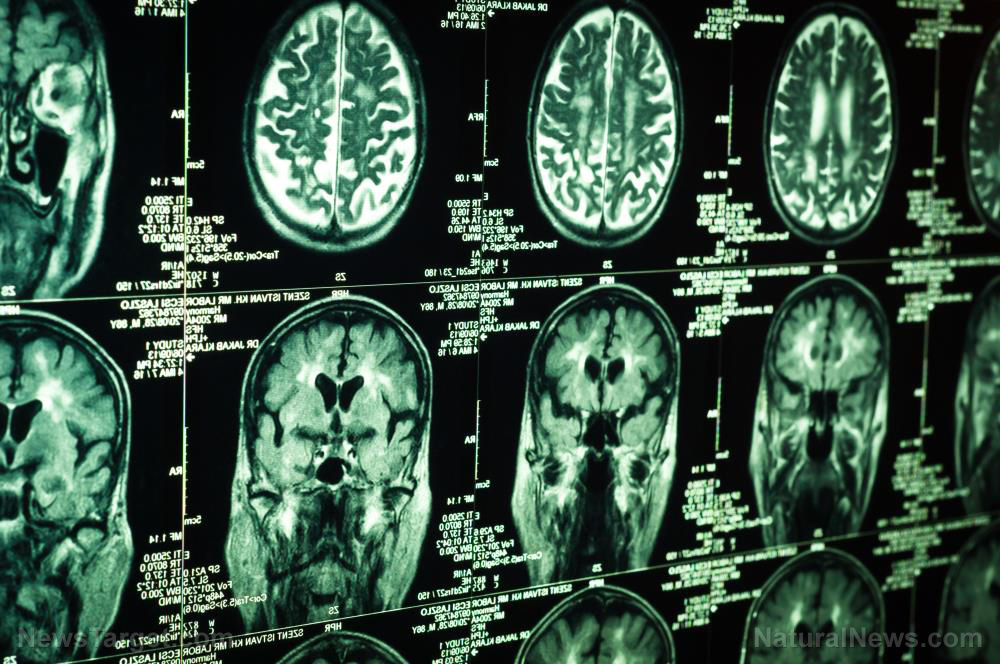Researchers map the Alzheimer’s brain, discover that one area appears to protect itself against decline
09/26/2019 / By Edsel Cook

The latest protein maps of the brains of patients with Alzheimer’s disease showed that at least one region succeeded in holding off the ravages of the disease. U.K. researchers believed that the cerebellum’s ability to protect itself against Alzheimer’s might be reproducible in other parts of the brain.
They examined the brain and other essential organs of people who died due to complications caused by the neurodegenerative disease. To their surprise, the cerebellum of the patients lacked the distinct damage associated with Alzheimer’s.
The cerebellum is in charge of controlling the movements of the body. Unlike the five other essential brain regions evaluated by the researchers, it remained intact.
Further investigation by the University of Manchester researchers revealed the presence of proteins in the cerebellum. The natural compounds demonstrated protective properties that kept Alzheimer’s disease from spreading to that part of the brain.
They theorized that the cerebellum responded to the appearance of Alzheimer’s by producing these beneficial proteins. The protein-based reaction might be the natural process with which the brain defended itself from dementia. (Related: Is this often overlooked vegetable the key to fighting Alzheimer’s?)
Some parts of the brain resist Alzheimer’s disease better than others
The most common form of dementia, Alzheimer’s disease afflicts more than half a million patients in the U.K. and 5.7 million victims in the U.S. Researchers are studying the formative stage of the neurodegenerative disease in the hopes of developing an effective treatment for those millions of victims.

In addition to the brains of people with Alzheimer’s, the Manchester researchers also looked at the organs of deceased people who died from cancer and other diseases unrelated to dementia. They compared the number and type of proteins found in six critical parts of the brain.
Lead researcher Dr. Richard Unwin and his teammates identified 5,825 different proteins present in the brain. Forty-four of these molecules were brand new ones.
Unwin’s team started their mapping study in the three brain regions that always came under attack by Alzheimer’s disease. The entorhinal cortex assisted in the preservation of memories, the cingulate gyrus handled emotions, and the hippocampus dealt with both emotions and memories. The hippocampus also tended to serve as the starting point for Alzheimer’s.
When they moved to the motor cortex and the sensory cortex, they found these areas more or less unaffected by dementia. The motor cortex oversaw movement, while its sensory counterpart regulated the senses used by the body.
Newly discovered proteins in the cerebellum might be key to preventing Alzheimer’s
Finally, the cerebellum proved untouched by Alzheimer’s disease. The proteins present in this pristine brain region could be the key to prevent the progress or onset of dementia in older people.
“Many of the changes here are not seen in other regions and this could imply that this region actively protects itself from disease,” explained Dr. Unwin.
He and his team believed that the less-affected brain regions underwent alterations during the early stage of Alzheimer’s disease. Their findings suggested that any future cure needed to be applied as early as possible, preferably before brain cells started to die. They concluded their study with the hope that their protein map of Alzheimer’s brain contributed to the eventual development of a cure for the disease.
“By studying thousands of individual proteins, this exciting research has generated a detailed molecular map of changes that get underway in the brain in Alzheimer’s disease,” commented Alzheimer’s Research UK (ARUK) researcher Dr. Rosa Sancho. “This information will help researchers navigate the complex and changing environment of the brain in Alzheimer’s, and identify processes that could be targeted by future drugs.”
Sources include:
Submit a correction >>
Tagged Under:
alzheimer's cure, Alzheimer's disease, Alzheimer's research, brain health, new discovery, prevent Alzheimer's disease, Proteins
This article may contain statements that reflect the opinion of the author



















